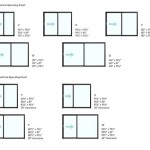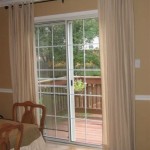How Much Does It Cost To Convert A Patio Into A Sunroom?
Converting a patio into a sunroom is a popular home improvement project that can significantly enhance the livability and value of a property. It provides an enclosed space that allows for natural light and connection to the outdoors, while offering protection from the elements. However, the cost to convert a patio into a sunroom can vary widely depending on several factors. This article will explore the key elements that influence the price, providing a comprehensive overview of what homeowners can expect to spend.
Understanding these cost factors is critical for effective budgeting and project planning. Without a clear understanding of the scope and requirements, homeowners may find themselves facing unexpected expenses and delays. Therefore, careful consideration should be given to each of the following aspects before embarking on a patio-to-sunroom conversion.
Key Factors Influencing Sunroom Conversion Costs
Numerous factors contribute to the overall cost of converting a patio into a sunroom. These range from the type of sunroom desired and the materials used, to the necessary permits and labor costs. A thorough examination of each of these components will provide a realistic estimate of the potential expenses.
1. Sunroom Type: The type of sunroom chosen is a primary determinant of the overall cost. Sunrooms generally fall into three categories: three-season rooms, four-season rooms, and screen rooms that are upgraded. Each offers a different level of insulation and climate control, influencing the materials and labor required for construction.
Three-Season Sunrooms: These rooms are designed for use during the spring, summer, and fall seasons. They typically feature single-pane windows and less insulation than four-season rooms. As a result, they are less expensive to build, with costs ranging from $8,000 to $30,000. They are not generally heated or cooled via the home's central HVAC system, relying instead on portable heating or cooling units if needed. The simpler construction translates to lower material costs and faster installation times.
Four-Season Sunrooms: These sunrooms are designed for year-round use. They incorporate insulated windows, walls, and roofs, and are often connected to the home's central heating and cooling system. This level of insulation and climate control makes them significantly more expensive, with costs ranging from $20,000 to $80,000 or more. The increased cost reflects the need for more robust materials, additional labor for insulation and HVAC integration, and compliance with building codes related to permanent structures.
Upgraded Screen Rooms: In some cases, an existing screen room can be converted into a sunroom. This involves adding windows, insulation, and possibly a heating or cooling system. The cost of this type of conversion is typically lower than building a new sunroom from scratch, but it depends on the existing structure's condition and the extent of the upgrades required. Expect to pay between $5,000 and $25,000 for this type of project.
2. Materials: The materials used in the sunroom construction significantly impact the overall cost. Factors such as the type of framing, windows, roofing, and flooring all play a role.
Framing: Common framing materials include wood, aluminum, and vinyl. Wood framing is aesthetically pleasing but requires more maintenance and is susceptible to rot and insect infestation. Aluminum is durable and low-maintenance but can be more expensive than wood. Vinyl is a popular choice due to its affordability, durability, and low-maintenance properties. The choice of framing material will influence both the material cost and the labor required for installation. Wood framing may require specialized carpentry skills, while aluminum and vinyl framing are often easier and faster to install.
Windows: Windows are a significant cost component, especially for four-season sunrooms. Single-pane windows are the least expensive but offer minimal insulation. Double-pane windows are more energy-efficient and provide better insulation. Low-E glass coatings can further enhance energy efficiency by reducing heat transfer. The type of window chosen will depend on the desired level of insulation and the climate in which the sunroom is located. Consider also the window style; casement, double-hung, and sliding windows all have different price points and installation requirements.
Roofing: The roofing material should match or complement the existing house and will likewise have an impact on cost and performance. Options include asphalt shingles, metal roofing, and polycarbonate panels. Asphalt shingles are a cost-effective option, while metal roofing offers durability and longevity. Polycarbonate panels are lightweight and allow for ample natural light but may not provide as much insulation as other materials. The structural requirements of the roof will also influence the cost. A heavier roofing material may require additional structural support, increasing the overall project expense.
Flooring: The flooring material should be durable, weather-resistant, and aesthetically pleasing. Common options include concrete, tile, stone, and composite decking. Concrete is a budget-friendly option but may require sealing or staining to enhance its appearance. Tile and stone are durable and attractive but can be more expensive to install. Composite decking is a popular choice for patios due to its resistance to moisture and fading. The cost of flooring will depend on the material chosen, the size of the sunroom, and the complexity of the installation. Leveling the existing patio surface may also be necessary, adding to the overall expense.
3. Labor Costs: Labor costs constitute a significant portion of the total project expense. The cost of labor will depend on the complexity of the project, the local market rates, and the experience of the contractors. It is essential to obtain multiple quotes from reputable contractors and to carefully review their proposals to ensure they include all necessary work.
Demolition and Site Preparation: If the existing patio requires demolition or significant site preparation, such as leveling or drainage improvements, this will add to the labor costs. Removing existing structures, such as fences or landscaping, may also be necessary.
Framing and Construction: The framing and construction of the sunroom require skilled labor. This includes building the walls, installing windows and doors, and constructing the roof. The complexity of the design will influence the amount of labor required. Custom designs or unusual shapes may require more specialized skills and time.
Electrical and HVAC: If the sunroom will include electrical outlets, lighting, or HVAC, this will require the services of licensed electricians and HVAC technicians. Running electrical wiring and ductwork to the sunroom can be a complex and time-consuming task, especially if it involves tapping into existing systems.
Finishing Work: Finishing work includes tasks such as installing flooring, painting, and adding trim. This may also include installing fixtures, such as ceiling fans or lighting. The level of detail and customization will influence the amount of labor required for finishing work.
Permits and Inspections: Obtaining the necessary permits and undergoing inspections is a crucial part of the sunroom conversion process. The cost of permits varies depending on the location and the scope of the project. Inspections are required to ensure that the construction meets building codes and safety standards. Failing to obtain the necessary permits can result in fines and delays.
Additional Cost Considerations
Besides the core elements of construction, several other factors can influence the overall cost of converting a patio into a sunroom.
1. Patio Condition and Modifications: The existing condition of the patio is a significant factor. If the patio is uneven, cracked, or requires significant repairs, this will add to the overall cost. Modifications may also be necessary to ensure the sunroom is properly supported. This could include reinforcing the foundation or adding structural supports.
2. Design Complexity: A complex or custom design will invariably increase the cost of the project. Unusual shapes, large windows, or elaborate roofing will require more specialized labor and materials. Simpler designs are generally more cost-effective.
3. Geographical Location: The cost of materials and labor varies depending on the geographical location. Areas with higher labor costs and stricter building codes will generally have higher overall project costs.
4. Unexpected Issues: It is always wise to factor in a contingency budget for unexpected issues that may arise during the construction process. These could include unforeseen structural problems, hidden plumbing or electrical issues, or changes in building codes.
Budgeting and Cost-Saving Strategies
Converting a patio into a sunroom is a significant investment, and careful budgeting is crucial to ensure the project stays within reach. Here are some strategies to help manage costs and potentially save money:
1. Obtain Multiple Quotes: Get at least three quotes from reputable contractors to compare prices and services. Be sure to review the proposals carefully to ensure they include all necessary work and materials.
2. Choose Cost-Effective Materials: Opt for cost-effective materials that still meet your needs and aesthetic preferences. For example, vinyl framing is generally more affordable than wood or aluminum.
3. Consider a Simpler Design: A simpler design will reduce the amount of labor and materials required, resulting in lower overall costs. Avoid complex shapes or custom features if you are on a tight budget.
4. DIY Some Tasks: If you are comfortable with home improvement projects, consider doing some of the work yourself, such as painting or installing flooring. However, be sure to leave critical tasks, such as electrical or HVAC work, to licensed professionals.
5. Plan Ahead: Careful planning can help avoid costly mistakes and delays. Take the time to research your options, obtain the necessary permits, and develop a detailed budget before starting the project.
By carefully considering these factors and implementing cost-saving strategies, homeowners can effectively manage the expense of converting a patio into a sunroom and enjoy the benefits of this valuable home improvement project.

Fixr Com Sunroom Addition Cost To Build

Converting Our Screened Porch To A Sunroom

How Long Does It Take To Build A Sunroom Screen Porch Conversions Patio Enclosures 3 Season Sunrooms

Patio Enclosures Convert Your Porch To Sunroom Area

How Much Does A Sunroom Cost To Build 2024

How Much Should A Sunroom Cost Forbes Home

How Much Does A Sunroom Cost To Build 2024

Diy Sunroom How To Convert A Porch Framing And Windows Run Radiance

Open Er Up Converting A Sunroom Into Veranda Young House Love

What You Need To Know About Converting A Porch Three Seasons Room
Related Posts








